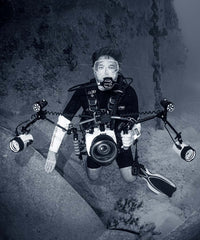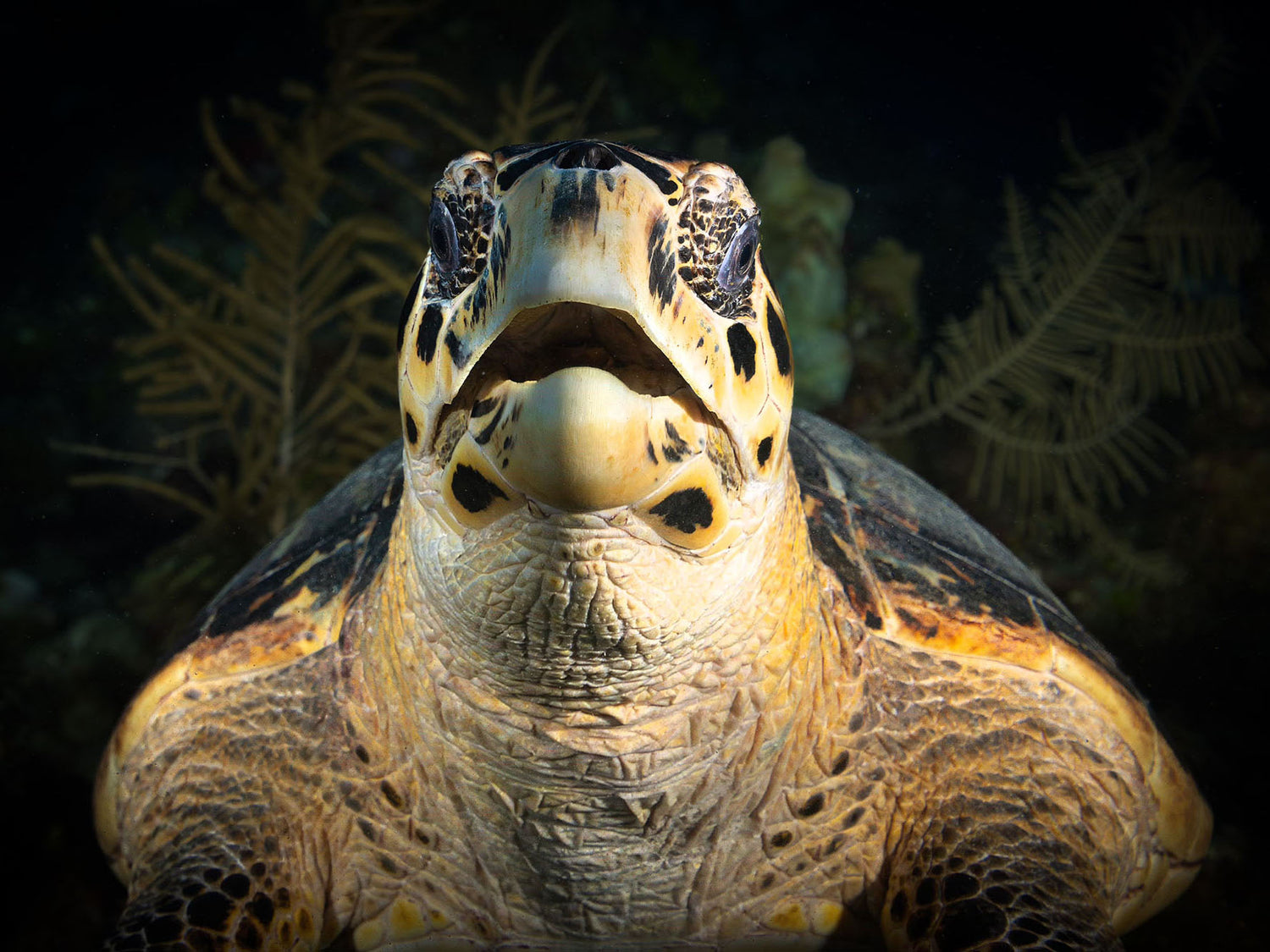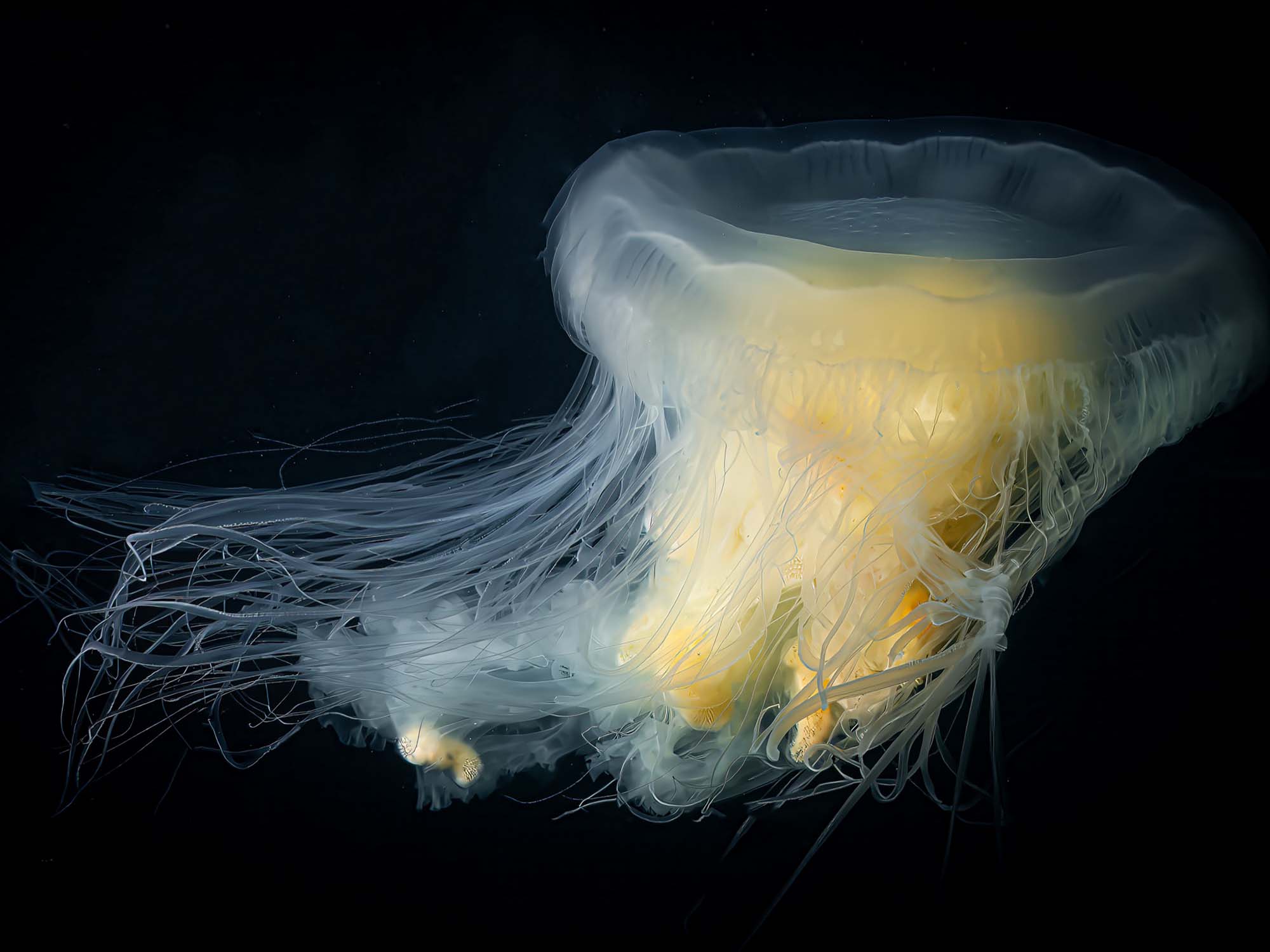By Gary Burns
Grand Cayman is known well for its turtle population and has celebrated the iconic hawksbill turtle by having images of the turtles on its currency. In the north part of the island, a turtle sanctuary and visitor center is located, so that you can experience the turtles first hand.
During autumn 2023, I had a wonderful opportunity to visit Grand Cayman with my friends and dive buddies from Ikelite. Each day we met with the EPIC Divers dive boat to explore all the local reefs and wrecks off the Seven Mile Beach. During each adventure I was looking for the opportunity to see a Cayman turtle, feeding on the coral.

Thank you to the wonderful crew at EPIC Divers in Grand Cayman for their guidance. © Gary Burns
Finding Turtles to Photograph
One good indicator that turtles were in the area is to find a pair of angel fish. They follow the turtles to where they are feeding in order to pick-up some of the discarded coral that the turtles leave behind.
On our third dive, we were exploring the reef in about 60 feet (18.2 meters) of water, my dive buddy John spotted a Hawksbill turtle enjoying his breakfast on the reef.
The location where the turtle was feeding provided an ideal opportunity to be positioned below the turtle, so that every time she lifted her head, I could take images of her smiling.
Camera Settings, Strobe Placement, and Composition
My first trial image was set at 1/160, F8 and 100 ISO. I angled the strobes off-center about 30 degrees and took the shot. The turtle wasn’t alarmed by the strobes going off and kept enjoying her breakfast. The light from the surface was perfect, which allowed the creative side of underwater photography to be put into action.
The questions I asked myself were: What if I tried an aperture of F20, to darken the background? What if I change the angle of the subject, should I use a landscape or portrait position? Lots of scenarios go on at this point. The subject seemed to like having its portrait taken, so why not try to explore as many ideas as possible to achieve the iconic image I have always wanted to achieve?
After 5 minutes of exploring all the angles and camera adjustments I could think of, my new turtle friend decided to leave the reef and head for the surface. This gave me the ideal opportunity to review the images and find what worked and what didn’t work. I watched the turtle surface, take a breath, and immediately head back down to the same spot on the reef to enjoy some more of the breakfast buffet.

During the turtles decent and while at the surface, this gave the opportunity to shoot several images of the turtle in mid water, which meant stopping down the aperture to account for the available sunlight, in order to avoid the subject being under exposed and a silhouette. © Gary Burns
As soon as the turtle reached the reef, she headed for the same spot that she had left before going up for a breath of air. I had positioned myself in anticipation of her returning to the same spot and had the camera and strobe positions set to the optimum settings based on the review I had been able to have while waiting for the turtle's return.
Pro-Tips
My recommendation for camera settings based on the available light and depth conditions would be 1/160 sec, F/11, 100 ISO. The Ikelite strobes were synchronized to the camera, hence 1/160 to 1/200 shutter speeds I found to work well in the blue water.
Strobe positioning is the variable in the equation, I would start with the strobes positioned at 30 degrees off axis, so the strobe beams overlapped in the center of the turtle image. Moving the strobes, and even turning one off for portrait shots, works well so that you only light the bottom of the subject and allow the surface light to shine through.
One note of safety which I must stress: taking the images is our goal, but always watch your dive computer settings and be aware of your depth and stop times.
Gary's Hawksbill Gallery
The results of my patience paid off, as I was able to take some of the iconic images I had wanted to share with my dive buddies. The following images were my favorite shots of the iconic hawksbill turtle.

Finding a turtle enjoying breakfast made coordinating composition and camera settings and strobe positioning so much easier. Chasing a turtle rarely makes for a good photo. © Gary Burns

All the images in this gallery were taken using the Canon R5 camera inside an Ikelite Underwater Housing with dual DS161 Strobes. © Gary Burns

Base setting recommendations for this type of photograph: 1/160 sec, F/11, 100 ISO. © Gary Burns.

Hawksbill turtle enjoying a breakfast of coral and posing for the camera. © Gary Burns
Want to Dive With Us?
Ikelite's next dive trip heads to Little Cayman in October 2024. Join some of the Ikelite crew and a limited number of select guests as we dive one of the Caribbean's most iconic spots. Improve your imaging, make new friends, and enjoy laid-back diving! Find out more.

Additional Reading
Photographing the Ethereal Egg-Yolk Jellyfish
Sea Turtle Eating Coral in Grand Cayman // Sony a7C II Underwater [VIDEO]
Sea Turtle Portraits with DS230 Strobes
Canon R5 Underwater A-Z // Top 3 Custom Settings for Underwater Use [VIDEO]













![Instagram Tips for Underwater Photographers [VIDEO]](http://www.ikelite.com/cdn/shop/articles/Instagram_Tips.jpg?v=1705065967&width=2000)